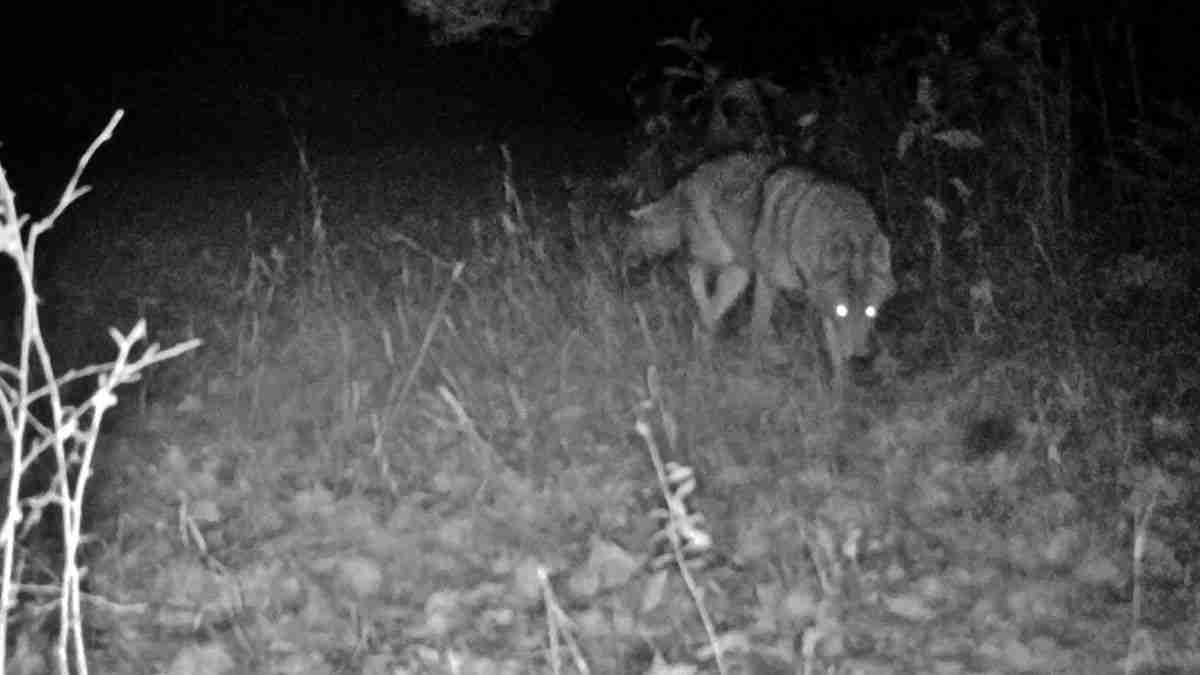Night Hunter: Strategies And Techniques For Nighttime Hunting

Table of Contents
Essential Equipment for Night Hunting
Success in night hunting hinges on having the right gear. Investing in high-quality equipment is crucial for both safety and effectiveness.
Choosing the Right Night Vision Device
Night vision devices are the cornerstone of successful night hunting. They come in two primary types: digital and thermal. Digital night vision devices amplify ambient light, providing a green-tinged image. Thermal night vision, on the other hand, detects heat signatures, creating an image based on temperature differences.
- Key Features to Look For: High resolution, sufficient magnification for your hunting range, long battery life, and rugged durability.
- Budget Considerations: Night vision devices range widely in price, from affordable entry-level models to high-end professional units. Your budget will significantly influence your options.
- Popular Brands and Models: Research reputable brands such as ATN, Pulsar, and FLIR to find a device that meets your needs and budget.
Digital vs. Thermal: Digital night vision is generally more affordable but is heavily reliant on available light. Thermal, while more expensive, excels in complete darkness and can even penetrate foliage, making it ideal for detecting game in dense cover. The best choice depends on your hunting environment and budget.
Weapon Selection and Modifications
Choosing the right weapon is paramount. Rifles are commonly favored for their accuracy at longer ranges, while shotguns can be effective at closer distances. Caliber selection depends on the game you're hunting.
- Popular Rifle Calibers for Night Hunting: .308 Winchester, .30-06 Springfield, 6.5 Creedmoor.
- Recommended Shotgun Gauges: 12 gauge, 20 gauge.
- The Importance of Accurate Zeroing: Precise zeroing is crucial for accuracy in low-light conditions.
Modifying your weapon can significantly enhance its performance for night hunting. Adding a quality scope, a suppressor for reduced noise and recoil, and a robust mount for your night vision device are essential considerations. A suppressor minimizes sound, allowing for more stealthy approaches and cleaner shots.
Illumination and Lighting
Proper illumination is critical, but excessive light can ruin your night vision. Red light is preferred as it preserves your night vision more effectively than white light.
- Different Types of Headlamps: LED headlamps offer longer battery life and greater durability than incandescent models.
- The Advantages of Red Light: Red light preserves your dark adaptation, allowing you to maintain better vision in low-light conditions.
- Safety Considerations for Using Lights: Always be mindful of the direction and intensity of your light. Avoid shining it directly into your own eyes or those of other hunters.
A weapon-mounted light can be valuable for close-range shots, but practice using it without interfering with your aim. Mastering this technique is crucial for quick and accurate shots.
Mastering Night Hunting Techniques
Effective night hunting requires understanding animal behavior and employing stealthy techniques.
Understanding Animal Behavior at Night
Nocturnal animals behave differently at night. Their senses, movement patterns, and feeding habits shift in darkness.
- Nocturnal Animal Vision: Many animals have superior night vision compared to humans. Understanding their visual capabilities is crucial for effective stalking.
- Typical Nighttime Movement Patterns: Different animals have unique patterns of movement at night. Research your target animal's typical behavior.
- Sounds to Listen For: Train your hearing to identify sounds associated with your target animal, such as rustling leaves, breaking twigs, or vocalizations.
For example, deer during the rutting season will be more active at night, and their behavior will be driven by the search for mates.
Stealth and Approach
Silent movement is paramount. Wind direction, scent control, and camouflage are vital components of a successful nighttime hunt.
- Techniques for Moving Silently through Various Terrains: Practice slow, deliberate movements, avoiding crunching leaves or twigs.
- Using Wind to Your Advantage: Always position yourself downwind of your target to mask your scent.
- Scent Elimination Strategies: Use scent-eliminating clothing and sprays to minimize your scent signature.
Using natural cover such as trees, bushes, and terrain features to mask your movement and conceal your position is crucial for successful stalking.
Shot Placement and Accuracy
Shooting accurately at night presents unique challenges. Practice is essential for developing the skills needed to make precise shots in low-light conditions.
- Practicing Nighttime Shooting: Regular practice in simulated low-light conditions is vital to build proficiency.
- Understanding the Limitations of Night Vision: Night vision devices can distort distances and perceptions; practice to account for these limitations.
- Aiming Techniques: Use proper aiming techniques, focusing on precise shot placement for a quick and humane kill.
Precise shot placement is critical for ensuring a clean kill and minimizing suffering.
Safety First: Night Hunting Safety Precautions
Safety should always be your top priority.
Identifying Your Target
Positive target identification is absolutely critical in low-light conditions. Never shoot at anything you cannot positively identify.
Safe Gun Handling in Low Light
Reinforce all safe gun handling practices. Always keep your finger off the trigger until you're ready to shoot.
Awareness of Surroundings
Be aware of potential hazards such as obstacles, other hunters, and wildlife.
First Aid and Emergency Preparedness
Prepare for potential injuries or emergencies by carrying a well-stocked first-aid kit, a communication device, and informing someone of your hunting plans.
Conclusion
Mastering night hunting requires a combination of specialized equipment, a deep understanding of animal behavior, and the development of precise stealth and shooting techniques. While challenging, the rewards of a successful night hunt are immense. By focusing on safety and diligently practicing the techniques outlined above, you can significantly increase your chances of success. Continue to research and practice these techniques to become a proficient night hunter and experience the unique thrill of a successful night hunt. For further resources on night vision equipment and hunting techniques, explore [link to resource 1] and [link to resource 2].

Featured Posts
-
 Tam Krwz Ke Jwte Pr Mdah Ka Waqeh Swshl Mydya Pr Rdeml Ky Lhr
May 12, 2025
Tam Krwz Ke Jwte Pr Mdah Ka Waqeh Swshl Mydya Pr Rdeml Ky Lhr
May 12, 2025 -
 Boston Celtics Playoff Run Payton Pritchards Unexpected Contribution In Game 1
May 12, 2025
Boston Celtics Playoff Run Payton Pritchards Unexpected Contribution In Game 1
May 12, 2025 -
 Shane Lowry Reacts To Rory Mc Ilroys Masters Tournament
May 12, 2025
Shane Lowry Reacts To Rory Mc Ilroys Masters Tournament
May 12, 2025 -
 Yankees Lineup Aaron Boone On Judges Role And The Leadoff Hitter
May 12, 2025
Yankees Lineup Aaron Boone On Judges Role And The Leadoff Hitter
May 12, 2025 -
 Judge Considers 2026 World Baseball Classic A Real Possibility
May 12, 2025
Judge Considers 2026 World Baseball Classic A Real Possibility
May 12, 2025
Latest Posts
-
 Salinda And Velos Record Setting Round At The Zurich Classic
May 12, 2025
Salinda And Velos Record Setting Round At The Zurich Classic
May 12, 2025 -
 Zurich Classic Salinda And Velo Take The Lead With A 58
May 12, 2025
Zurich Classic Salinda And Velo Take The Lead With A 58
May 12, 2025 -
 Isaiah Salinda And Kevin Velos 58 Leads At Zurich Classic
May 12, 2025
Isaiah Salinda And Kevin Velos 58 Leads At Zurich Classic
May 12, 2025 -
 Pga Tour Mc Ilroy And Lowry Commit To Zurich Classic Defense
May 12, 2025
Pga Tour Mc Ilroy And Lowry Commit To Zurich Classic Defense
May 12, 2025 -
 Augusta National Rory Mc Ilroys Daughters Impressive Putt Jowhar News
May 12, 2025
Augusta National Rory Mc Ilroys Daughters Impressive Putt Jowhar News
May 12, 2025
